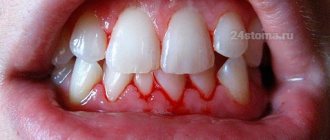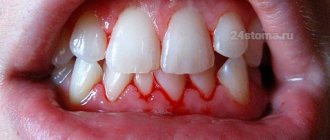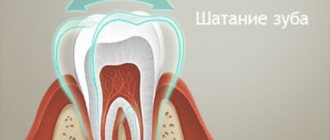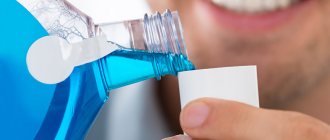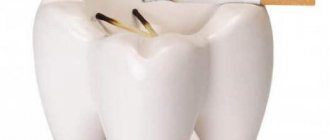Treatment of malocclusion is one of the most popular services in the dental department of the CELT clinic. Advanced orthodontic technologies used by our specialists are able to effectively correct dental anomalies. In case of minor malocclusions, our specialists use dental plates.
Having decided to install a dental plate, you will receive a removable or non-removable orthodontic system in the form of a metal arch with a plastic base made of hypoallergenic material. Its design provides for the presence of clamps. The purpose of the system is to apply gentle pressure and thus correct the dentition. To do this, it has a screw, which must be adjusted as you wear it. This approach allows you to increase the load on the dentition and apply more pressure.
Manufacturing of fixed and removable dental plates
carried out on an individual basis, and they themselves allow:
- adjust the position of the incisors;
- increase or decrease the width of the palate;
- adjust the shape of the jaw;
- accelerate or slow down jaw growth depending on the identified defects.
At CELT you can get advice from a dental specialist.
- The cost of an orthodontist consultation is 2,000
Make an appointment
Indications
In the vast majority of cases, dental plates are used to correct teeth in children under the age of twelve. It is during this period that intensive development of the jaws occurs, due to which the treatment will be as effective as possible. During this period, indications for use are:
- malocclusion;
- incorrect position of teeth;
- crowding or large spaces between teeth;
- too slow or, on the contrary, intense jaw growth.
Plates for teeth
It is also used for treatment in
adults
. In this case, the indications are as follows:
- maintaining the results of orthodontic treatment using braces;
- insignificant alignment of teeth within the dentition.
It is worth noting that competent and timely use of dental plates in childhood gives excellent results - and this despite the fact that its price is much lower than braces! This is why we recommend that parents seek treatment on time: you will not only save money, but also eliminate discomfort for your children (after all, plates are not as noticeable on the teeth as braces).
Contraindications
Orthodontic plates have a minimum of contraindications. So, the absolute ones relate to the following:
- individual intolerance to the materials from which structural elements are made;
- dental periodontal disease, in which there is atrophy of bone tissue and a decrease in the height of the interdental septa;
- diseases of the respiratory system.
There are also relative contraindications. These are carious lesions of the teeth: before applying the plates, they must be eliminated.
Types of plates for teeth
There are two types of bite correction plates:
- Non-removable - fixed on the outer surface of the teeth. Their design includes a system of locks, through each of which a steel arc is threaded. The latter, restoring its original shape, sets the teeth in the required direction of movement. The time it takes to correct teeth with a non-removable plate is about two years, and the treatment method itself can be used for both children and adults;
- Removable ones have a simpler design compared to non-removable ones. They are made from plastics that are non-toxic to the human body. They are fixed to the teeth using metal hooks. In addition, their design may include auxiliary screws and springs. Removable teeth straightening plates can be removed while eating or brushing your teeth. The period of wearing them varies from one and a half to two years and is determined by the doctor.
Fixed dental plates, the price of which is significantly higher than their removable counterparts, are rightfully considered more effective. The choice of type depends on the complexity of the case.
In addition, classification is carried out based on the purpose of application. The types of plates are presented in the table below:
| Type of plates | What is it used for? | Peculiarities |
| Mechanical | Optimal for correcting crooked teeth and helping to straighten them. | They have clasps, arches and screws made of metal. |
| Equipped with a hand-shaped process | Allows you to correct an individual tooth. | The design is such that it allows you to apply pressure to one specific tooth. |
| Functional | They stimulate the development of the jaw and chewing muscles, allow you to restore facial muscles and even correct the shape of the face due to the restructuring of the dentition and the regulation of the temporomandibular joints. | Requires wearing for 14 hours a day. They fix the jaw in one position and are complex structures, when worn, the child cannot eat or speak. |
| Single jawed | Used to correct anomalies of individual teeth on one jaw. | The design includes special screws |
| Vestibular | They allow you to remove the soft tissue that has formed between the teeth by moving it away. | They are placed between the teeth and lips or between the teeth and cheek, depending on the location of the abnormal area. |
| With retraction type arc | Effective in straightening front teeth. | The plate is installed in such a way that it covers the teeth from the outside. |
| With arc with active pusher | Used to correct the palatal position of the upper teeth. | The arc has a base made of hypoallergenic plastic and a spring. |
Collagen plates Farmadont I for inflammation in the oral cavity
Collagen plates Farmadont I for inflammation in the oral cavity
Collagen plates for gums Farmadont I with maquea, sage, rose hips and chamomile are used for the prevention and treatment of gum diseases. Suitable for children and adults.
Farmadont I collagen plates consist of extracts of medicinal plants, as well as cosmetic and natural collagen.
In case of inflammation in the oral cavity (gingivitis, alveolitis, periodontitis), the plates heal and relieve inflammation, cleanse tissues, strengthen blood vessels and local immunity of the oral cavity.
Active components:
- Collagen
is the main building material of connective tissues. It has anti-inflammatory and hemostatic properties, and also restores the soft tissues of the oral cavity, stimulating the production of its own collagen. - Digestase (collagenase)
is a natural enzyme obtained from the pancreas of Kamchatka crab. Cleanses the site of tissue damage from purulent-necrotic masses, prevents the development of rough scars. - Macleay extract
is active against many types of fungal infections and microorganisms, including those insensitive to antibiotics. - Sage extract
contains vitamins P and PP, flavonoids and tannins, which provides a pronounced astringent effect. - Rosehip extract
is rich in macro- and microelements (vitamins C, K, carotene, potassium, iron, manganese, phosphorus, calcium, magnesium), which have a beneficial effect on the general condition of the oral cavity, strengthening local immunity and increasing vascular tone. - Chamomile extract
is a natural antiseptic. In addition, it has an analgesic effect and eliminates irritation.
There are 24 plates in a pack, each in individual sterile packaging.
Indications for use: Farmadont I is used for the treatment of inflammatory, infectious-necrotic, dystrophic diseases of the oral cavity at any stage, as well as for prevention of the following diseases:
- Stomatitis.
- Gingivitis.
- Periodontitis.
- Alveolitis.
- Glossitis.
After surgery, the plates prevent the development of inflammation of periodontal tissues and accelerate healing in case of injury.
Plates are recommended during the prosthetic process and after removal of tartar. Directions for use: It is recommended to use the plates after brushing your teeth. Remove the plate from the package with dry hands, apply it and carefully straighten it along the gum. The plate itself is fixed on the gum.
Over time, the application will dissolve. If a second application is necessary, remove any remnants of the previous one.
The plates can be used until complete recovery from the disease or healing of the injury (1-2 weeks). For detailed instructions, consult your doctor.
Contraindications: Individual intolerance to the components.
Ingredients: collagen, chamomile extract, maclea extract, sage extract, sodium alginate, rose hip extract, collagenase.
Dental plates for children
Having looked at the photos before and after wearing dental plates on children’s teeth, you will conclude that they are very effective - and you will be right. With the right approach, they can be called the best way to correct a number of malocclusions. Their use is advisable under the age of 12 years during active jaw growth. To correct serious anomalies, non-removable structures are used. If there is a slight curvature or prevention is required, removable plates are ideal. As already mentioned, the production of plates is carried out on an individual basis and requires taking impressions and making plaster models. It is very important that the surface relief of the gums and palate coincide exactly. To do this, a special adjustment is carried out, which takes no more than 10 minutes.
Gum treatment
The gum is part of the periodontium, which also includes the periodontal ligament, tooth root cementum and jaw bone. The periodontium provides support for the tooth in the socket of the jaw bone. Provides uniform distribution of load during chewing. Covers the cervical part of the tooth, not covered with enamel, protects the tooth ligaments from the ingress of microorganisms and food debris. Possessing a complex structure, in unfavorable conditions it is often susceptible to various diseases. In Russia, gum disease affects 50% of the population aged 25-30 years. By the age of 40 years, the incidence reaches 94%. In most cases, gum and periodontal diseases begin as a result of insufficient oral hygiene. Microbial plaque is their main cause. Also, the causes of periodontal diseases can be weakened immunity, individual characteristics of the body, inherited predisposition, and malocclusion. Gum problems can start unnoticed. It often happens that a person comes to the doctor when the disease is advanced and treatment will require a lot of time and effort. If you experience blood when brushing your teeth or have bad breath. When eating, there are unpleasant sensations and gums become inflamed. If you observe any of these symptoms, you should visit your dentist, who will prescribe the appropriate treatment.
Gingivitis
Periodontal diseases are tumor, dystrophic and inflammatory. From 90 to 95 percent are inflammatory diseases. The early stage of gum disease is gingivitis. Bleeding and swelling, sore gums. Accompanied by bad breath. There is an unpleasant aftertaste. The main cause of gingivitis is the accumulation of pathogenic microorganisms in periodontal pockets. That is, incorrect or insufficient oral hygiene. Gingivitis can also be caused by malocclusion, weakened immunity, leaky fillings, endocrine system disorders, gastrointestinal diseases, and infectious diseases.
Periodontitis
If the inflammatory process spreads deeper, then gingivitis turns into periodontitis. It is important to recognize periodontitis at an early stage, since in addition to the high probability of tooth loss, this disease leads to increased inflammatory processes throughout the body. The disease destroys the periodontal ligament. Periodontal pockets form into which pathogenic microorganisms enter. As a result of the inflammatory process, the tissues surrounding the tooth cannot hold the tooth and loses its stability. There is a high probability of losing it. In the first stages of the development of the disease, there is no severe pain. They appear when inflammation has penetrated deep inside and affected the gums and tooth tissue.
The Adent clinic has everything you need for painless and high-quality treatment of gum diseases. Qualified dentists will conduct an accurate diagnosis and recommend the best treatment method, selected individually.
Are there any difficulties?
According to reviews, dental plates are effective, but in the case of children there is one problem. It lies in the fact that you need to wear them at least 22 hours a day for 12 to 18 months. This does not always please young patients who are not delighted with the presence of a structure on their teeth, which requires getting used to and which may cause teeth pain at first.
It is important to explain to the child that plates are much less noticeable than braces, which will have to be worn if the plate does not give the desired effect... And to achieve the effect, you need to use it correctly. It is better to undergo a much simpler course of treatment now than to resort to much more complex treatment in adolescence - especially since the result will be obvious! The child needs to be taught:
- Wear the plate in the morning;
- Remove the plate to brush your teeth before going to bed;
- Do not remove the system during the day;
- Tighten the structure screw in a timely manner.
How to whiten teeth correctly?
Step one: read the instructions
Be sure to pay attention to what is written in the instructions, even if this is not your first time doing whitening. Most products have similar methods of use, but due to the difference in composition there may be some differences in use. Therefore, read the instructions to the very end, paying special attention to possible side effects.
- Remember that improper use of any whitening products is dangerous to the health of your teeth. The fact is that the process itself causes weakening of the enamel, so you need to approach it carefully. The active substance applied to the strips may cause soft tissue irritation and other problems.
- Different brands of strips have different instructions, so every time you use a product from a new manufacturer, read the manual carefully.
Step two: brush your teeth
Before you begin whitening, brush your teeth thoroughly, otherwise food debris and plaque will prevent you from achieving good results.
Important:
- Do not whiten your teeth immediately after brushing them; do this at least half an hour after the procedure.
If you want to achieve maximum results, it is better to have the cleaning done by a dentist. There are several procedures that will help restore teeth to their natural color and get rid of hard and soft plaque. The most popular options: ultrasonic cleaning and cleaning using an Air Flow device. The first is necessary if you have tartar. The second is a more gentle procedure; food debris and soft plaque are removed using a special abrasive solution, which is released under pressure.
Step Three: Prepare the Strips
Before you fix the strips, make sure you are using them correctly. Some manufacturers produce strips of various shapes for the upper and lower teeth. In other cases, the products do not differ from each other. Be sure to figure this out when you decide to whiten.
- After you understand how to properly fix the elements, prepare the strips. The composition contains an active substance, most often it is based on hydrogen peroxide. The principle of operation is simple - oxygen is gradually released from peroxide, which penetrates the enamel, discoloring the pigment.
- The smooth side does not contain active gel; its main function is to make it convenient for you to stick the strips to your teeth.
Step Four: Apply the strips to your teeth
- Apply the strip to the front surface of your teeth with the gel side so that it completely covers the teeth, then smooth out any irregularities.
- In order to straighten the strip, it is convenient to use a toothbrush.
- Make sure that the strip actually covers the entire row of teeth, if you, of course, want to get a uniform result.
- Try not to get the gel on your gums, especially during the period of wisdom teeth eruption, otherwise perioronitis may occur; if necessary, remove it with a cotton swab, as long-term presence of the active substance on soft tissues can cause irritation.
Step Five: Wait
After both strips are attached to the teeth, all that remains is to wait a little. Do not touch the strip for the process to proceed correctly. The required time depends on the concentration of the active substance and other factors. Therefore, be sure to read the instructions carefully to correctly determine how long you will need to wait. Usually the session lasts about half an hour, after which you can remove the strips.
Step Six: Remove the Strips
- After the waiting time has passed, you need to carefully remove the strips. Slowly peel them off the enamel surface and discard.
- Carefully watch the clock so as not to overexpose the gel on your teeth. This can lead to damage to the enamel or irritation of the gums, and the delay can also increase tooth sensitivity.
- Remember that if you leave the strips on longer, the effect will not become more noticeable.
- Be sure to rinse your mouth after removing the whitening strips. After this, to completely remove any remaining gel, brush your teeth with a toothbrush.
Seventh step: repeat the procedure
Unlike in-office whitening, home remedies never provide instant results. Therefore, to make your teeth whiter, you will have to undergo several procedures. The gel that is applied to the strips has a small concentration of the active substance, which is why the lightening is not immediately noticeable. But this also has its advantages, since the process becomes less destructive to the enamel. Remember that quality whitening requires patience. To obtain a noticeable effect, you will need to carry out several procedures. They should be repeated in accordance with the rules written in the instructions.
- In most cases, you will need to do the procedure for 30 minutes twice a day.
- The minimum recommended period for using whitening strips is 14 days.
- The results become noticeable approximately four months after you start the procedure.
Manufacturing and design features
Making plates to correct a bite is not an easy process, requiring a preliminary x-ray examination of the dentition. In addition, it is preceded by taking impressions and making control models. By conducting a preliminary assessment using them, the orthodontist decides how accurate the model is and whether it is suitable for the patient. If necessary, correction and re-fitting are carried out.
Plastic is used to make the base of the plate. The shape of the base exactly repeats the relief of the dental contour and gum surface. The base itself is durable and moderately rigid. The arc of the plate is made of steel wire and has hooks that are fixed on the cutters. As the position of the teeth changes and the jaw grows (when it comes to a child), the system is corrected.
Benefits of orthodontic plates
Although bite plates are only effective for minor malocclusions, they have a number of other benefits:
- Convenient to use. The design of the plates allows you to easily and quickly remove them while eating or brushing your teeth;
- Prompt production. The average production time for plates is from 2 to 4 weeks. At the same time, a removable type structure is manufactured faster than a non-removable one;
- Affordable price. The average price of a plate for correcting a bite is 2 times lower than the price of inexpensive braces.
What are the disadvantages of dental plates?
The use of records has a number of limitations. First of all, they are due to the fact that the functionality of the plates does not allow them to move teeth. It only makes it possible to hold them in a certain position, which does not allow them to be used to correct serious anomalies. At the same time, it is worth noting that often the reason for the insufficient effectiveness of treatment is a reduction in the time of wearing the structure. As for other disadvantages, these include:
- the need for long-term use;
- a number of uncomfortable sensations during adaptation;
- minimal pressure compared to braces;
- age restrictions for use;
- the need for constant monitoring by parents (in the case of children).
When can and cannot be used Mucograft?
I really like one of A. C. Clark's laws, which states that:
Over the course of ten years of working with the Geistlich Mucograft collagen matrix, we have tried to find the limits of its capabilities and thus form a range of indications for its use. And this is what we got:
Vestibuloplasty (deepening of the vestibule of the oral cavity)
The operation described in this article is the main reason for using Mucograft collagen matrices.
We use 98 out of 100 packages of Mucograft for vestibuloplasty in the area of teeth and/or implants:
The relevance of using collagen matrices increases during extensive and extended operations, while for minor (within 1-2 teeth) traumatic interventions, its use is not advisable from a financial point of view - the operation turns out to be too expensive.
Gum recession plastic surgery
The Geistlich Pharma company claims that plastic surgery for gum recession is one of the indications for the use of Mucograft collagen matrices. I find this statement not only controversial, but even contrary to the properties of the specified material. And that's why.
Firstly, when performing gum plastic surgery using the coronal flap displacement method (as, in fact, any other method), the use of a free connective tissue graft (CTG) is intended to change the thickness (biotype) of the gum adjacent to the tooth root. Mucograft is not capable of changing the biotype; its purpose is completely different - to increase the width.
Secondly, Mucograft does not in any way contribute to the “fusion” of the displaced mucosa with the tooth root. In my opinion, all those clinical problems where Mucograft was used to correct gum recession could have been solved without it - the result would have been exactly the same, and perhaps even better.
Thirdly, plastic surgery for gum recession in the area of one tooth is a trivial and very cheap operation. The use of a collagen matrix increases its cost at least twice. And if from a medical point of view the use of Mucograft is controversial, then from a financial point of view it is categorically not advisable.
Of course, if the doctor has a mortgage and a car loan, then you can use Mucograft everywhere and in any conditions, but if instead of a credit BMW and a mortgaged two-room apartment in Zilart, the dentist has a mind, then he will refuse to use collagen matrices for plastic surgery of single recessions.
In other words, I would caution against attempting to use Mucograft to repair gum recession. If only because I did not see good results in the long term (more than 5-10 years).
Preservation of the hole
You can read more about this operation here>>
I have no questions about the use of collagen matrices for graft isolation during socket preservation after extraction. In all respects, this does not contradict either common sense or the declared properties of Mucograft:
The need for such intervention raises much more questions for me - in my opinion, currently the indications for it are excessive and in most cases not justified. To specify them, you need to at least minimally understand the mechanisms of development of the atrophic process - but who delves into this? (((….
Closing perforation of the maxillary sinus mucosa during sinus lift
This version of the “non-canonical” use of Mucograft is described here>> or here>>, in an article devoted to complications of sinus lifting. I recommend reading it.
From the point of view of the known properties of collagen matrices and what we know about the microflora and structure of the maxillary sinuses, I find the use of Mucograft Seal to close perforations during sinus lifting not only justified, but expedient both from a medical and financial point of view (Mucograft Seal is cheaper any Geistlich barrier membrane).
Moreover, such tactics work in the case of very large perforations, when the Schneiderian membrane “tears into a British flag.” You just need to take a larger Mucograft.
Installation of plates
Installing the plates is a fairly quick, painless process that takes no more than 10 minutes. Most of the time is spent on final adjustment of the system. That is why the first installation of removable plates is carried out in the presence of the attending physician. The doctor will give detailed instructions on the rules for its use, care and how to properly regulate the tension of the arc. The first correction is carried out after the appearance of a visible result - it is this that determines the subsequent course of treatment and its duration. It is important to understand that at first the plate will be perceived as a foreign body in the mouth, which can cause discomfort, impaired diction and increased salivation. The adjustment period averages up to one week; after this the structure ceases to be felt.
How to care for the plates?
In order for the plate to serve the required time and not break, it is necessary to provide it with appropriate care. It is as follows:
- brushing with toothpaste every day;
- disinfection every week;
- storage in a special container, closed;
- oiling the screw;
- removing the plate while eating, brushing teeth, practicing martial arts, boxing and water sports.
Do you dream of beautiful teeth? Contact the orthodontists of the multidisciplinary clinic CELT!
Make an appointment through the application or by calling +7 +7 We work every day:
- Monday—Friday: 8.00—20.00
- Saturday: 8.00–18.00
- Sunday is a day off
The nearest metro and MCC stations to the clinic:
- Highway of Enthusiasts or Perovo
- Partisan
- Enthusiast Highway
Driving directions
